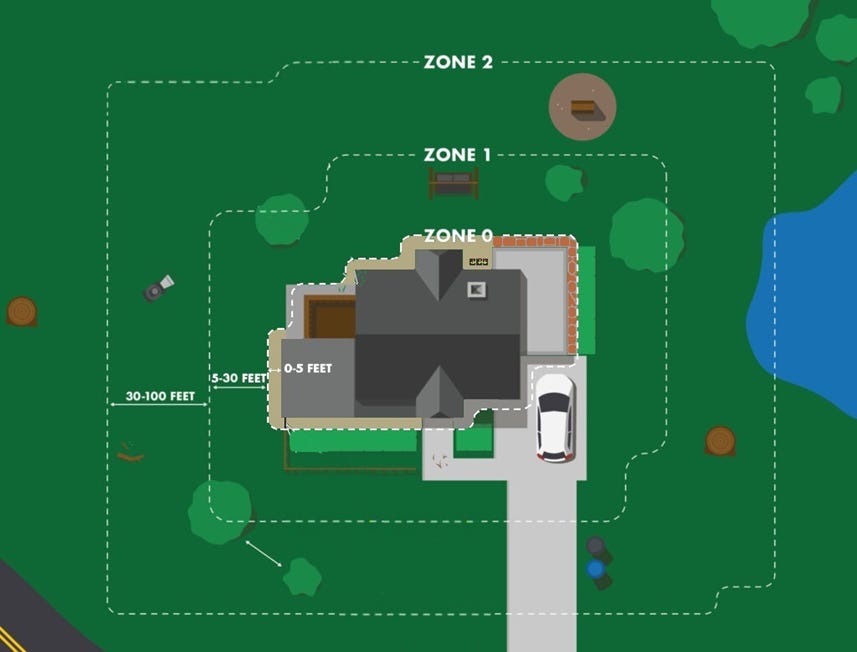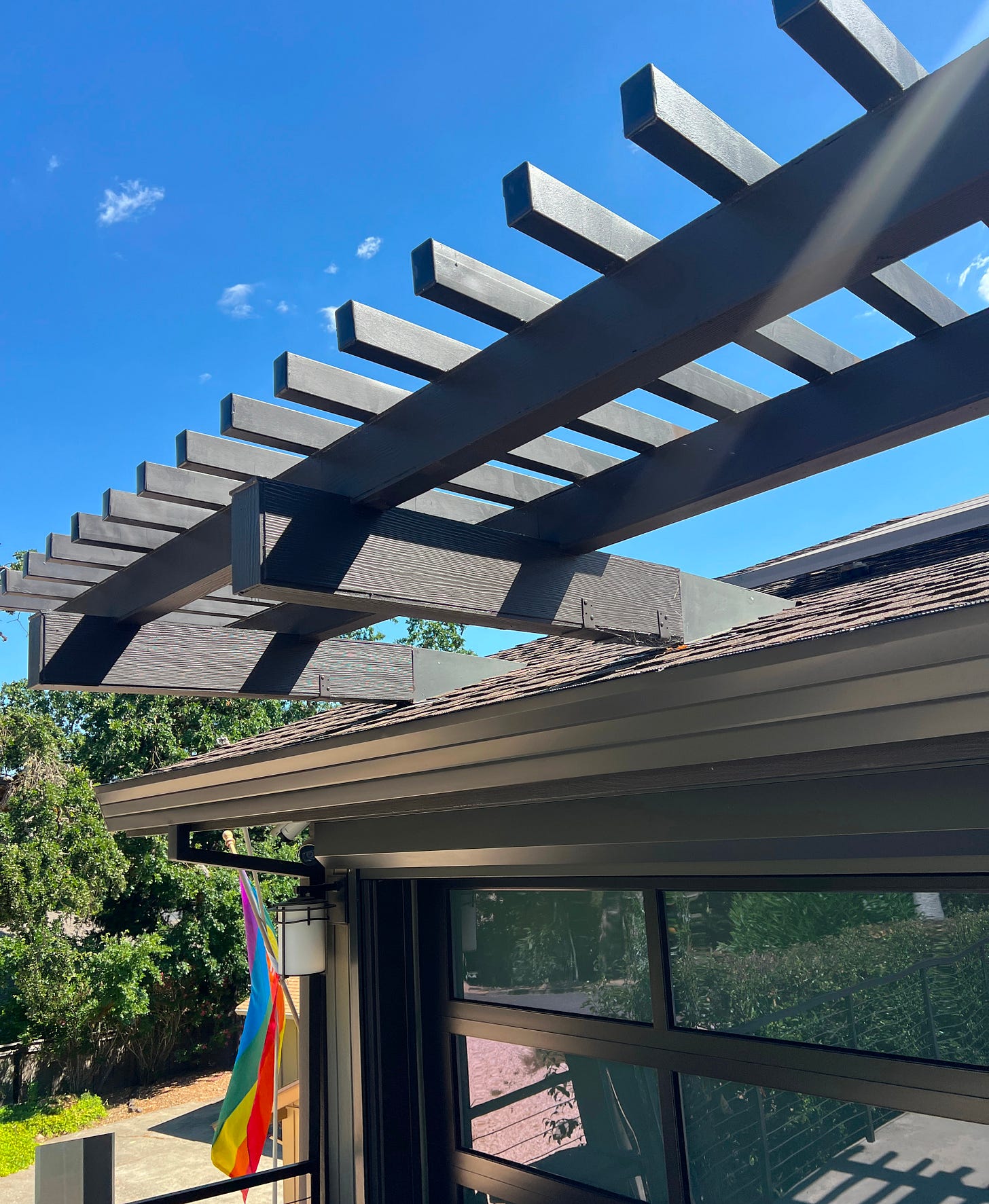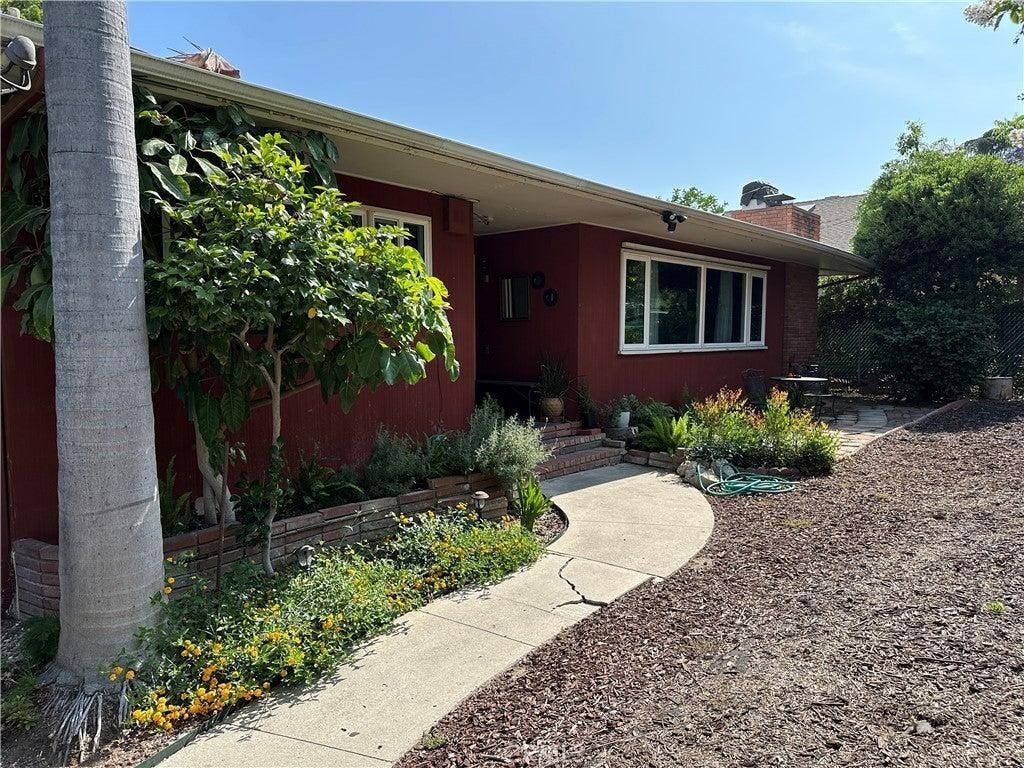Zone 0: The Definitive (but Evolving) Guide
It's emerged as one of the most critical (but divisive) battlegrounds in the fight to protect lives, property, and entire communities from wildfire. Here's what you need to know.
Excited to have our first guest authors this week — thanks to Damien and Eric for their contributions to this article!
Damien (McAnany) Luce is Design Lead at Permaculture Artisans, an award-winning ecological landscape design firm based in Sonoma County. He is a certified arborist, Accredited Professional with the U.S. Green Building Council, and has been in the landscaping field for nearly two decades.
Eric Schoohs is co-founder and COO of ECOS Land Services, which provides landscape design and implementation, defensible space and home hardening, and land stewardship services. In addition to his work with ECOS, he supports the Sonoma Ecology Center and teaches courses at Santa Rosa Junior College.
As California grapples with increasingly destructive wildfires, one concept has come to the forefront of mitigation policy and practice: Zone 0, the horizontal area within the first five feet around a structure and any outbuildings, attached decks, and stairs. An important concept for mitigation, emerging rules around what defensible space in Zone 0 constitutes have thrust the topic into the public domain.
In this week’s post, we’ll explore:
Why Zone 0 matters so much for wildfire mitigation
What the current rules require (and what they don’t)
How it came to be defined in California law, and upcoming rulemaking and enforcement timelines
How homeowners can navigate implementation (including using our new AI-based Zone 0 visualizer for inspiration)
Note: While much of this post focuses on California (where Zone 0 has become a core part of mitigation policy and discourse in recent months), we are cognizant that these standards are consistent with insurer standards and recommendations, and that other states may look to California as a model to emulate in future years. We believe this post can help anyone living with wildfire risk, though owners should always check against their local regulations.
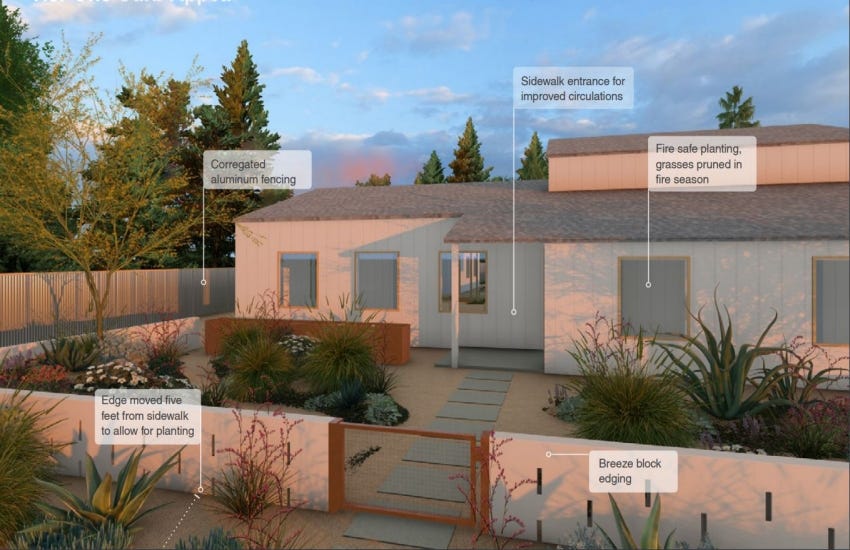
Why Zone 0 matters for wildfire survival
Flames are not always the direct culprit in structure loss. In fact, studies from CAL FIRE, IBHS, and post-fire damage inspections consistently show that most homes burn not from a wall of flame but from embers: small, wind-driven bits of burning material that can travel miles ahead of the fire front. These embers land in vulnerable spots, igniting nearby materials that then spread flame to the home.
Zone 0 exists to break this chain of ignition. By creating a five-foot buffer of non-combustible materials around a building, homeowners can drastically reduce the chance of embers finding fuel right next to the structure. This concept is backed by the data: homes that have implemented best practices in defensible space experience dramatically lower rates of damage or destruction in wildfire events:
Reducing vegetation in the 0- 5 ft zone nearly doubles a property’s wildfire survival rate
Homes with heavy vegetation coverage in the first ten feet have 272% higher loss ratio than homes with defensible space
During the 2022 Oak Fire in Mariposa County, homes which were compliant with defensible space standards were six times more likely to survive
After the 2017 Tubbs Fire and 2018 Camp Fire, the state recognized that stronger standards were necessary to protect communities in the wildland-urban interface. Assembly Bill 3074 was passed in 2020, creating vegetation clearance standards. However, because enforcement is tied to the State Fire Marshal, Governor Newsom issued Executive Order N-05-19 in early 2025, which among other directives called for clear definitions on defensible space regulations so local authorities could enforce them effectively.
What Zone 0 requires today
At its core, California’s Zone 0 standard calls for the elimination of combustible materials within five feet of any structure. Beyond removing combustible items, homeowners are often then tasked with the tall order of finding attractive, available options for non-combustible replacements. Some of the common items homeowners have to address include:
Ground covers like shredded bark or pine needles are out. Rock mulch, gravel, decomposed granite, concrete patios, and stone walkways can all replace combustible ground cover.
Vegetation typically has to be removed (to remove both vertical and horizontal fuel continuity near structures), with specific exceptions for plants and trees as follows:
Plants: Currently, the only vegetation permitted in Zone 0 is plants in noncombustible pots (to be brought inside during fire conditions) or no vegetation at all.
Trees: Mature trees, assuming limbing that keeps branches 10’ above the roof, are permitted
Structures abutting the home, most often fencing: Wood fences that connect directly to the home can act like a fuse. Metal fencing is preferred where a fence abuts the house, but a transition to non-combustible fencing (e.g. metal or masonry) in the last five feet before the house is a common solution.
Stored items (or accumulated debris): This includes both natural and manmade items. Homeowners are expected to remove wood mulch, leaf litter, and other plant debris that can easily ignite. Combustible stored items such as firewood, wooden furniture, plastic bins, and even toys should also be relocated outside the five-foot zone. Trash and recycling bins, with lids that can easily fly open and catch embers, are a particularly dangerous culprit for ignition.
The debate: Should Zone 0 be green or bare?
The conventional wisdom behind a non-vegetated Zone 0 is hard to dispute. Any plant, no matter how fire-resistant, can burn under the right conditions. Yet, the complicated role of vegetation (especially in urban environments) has sparked a growing debate among fire scientists, landscape architects, and homeowners about whether a totally barren Zone 0 is always the best choice.
In a recent Los Angeles Times op-ed, some academics caution that “a blanket prohibition on vegetation in Zone 0 may create unintended consequences.” They point out that completely bare zones can lead to soil erosion, create heat islands that stress homes and ecosystems, and diminish biodiversity. Moreover, they argue that with careful maintenance, “green, well-maintained plants” might provide a defensible buffer that is both fire-smart and environmentally responsible.
While the true definition of Zone 0 at the state level is still emerging (see below), the ongoing discourse around Zone 0’s definition and implementation is a sign that wildfire mitigation awareness is picking up.
The evolution of Zone 0 in California, from executive order to enforcement
Rulemaking and opportunities for public input
Following Governor Newsom’s mandate in early 2025, the Board of Forestry and Fire Protection, working with CAL FIRE, insurers, scientists, and local governments, launched a rulemaking process that stretched over several years.
The Board of Forestry and Fire Protection has committed to releasing draft regulation and hosting public workshops to gather input, with a mandate to complete the formal rulemaking process no later than December 31, 2025. To date, there have been four public workshops, with the next occurring in July 2025.
As is often the case in policymaking, the defining challenge of this effort has been how to define Zone 0 in ways that are effective, feasible, and clear for millions of homeowners with unique situations.
Enforcement timelines
The result was a set of minimum defensible space regulations that incorporate Zone 0 into California law. Enforcement will be handled primarily through local fire agencies and code officials, with an initial focus on education and voluntary compliance before stricter enforcement begins. Implementation will take place in (at least) two phases:
Beginning in January 2026, rules will apply immediately to new constructions in State Responsibility Areas or Very High Fire Hazard Severity Zones, based on the most recent state maps
Existing structures will have three years to achieve compliance
Still, municipalities and insurers may enforce stricter standards. For example, the City of Berkeley recently passed a new set of fire safety rules allowing citations and fines starting in 2026 for homes in certain areas demonstrating non-compliance.
Ways to build a resilient and aesthetic Zone 0
Creating an effective Zone 0 is both an art and a science. Clearing away combustible materials, hardscaping, and replacing structures may seem like simple, rote activities (not very exciting to spend money on!) but there are a variety of creative approaches.
Using old elements in new ways
The image above shows a smart and stylish example of creative Zone 0 design: a trellis made of what appears to wood, but upon second glance, uses noncombustible materials! Using metal downspouts as the beams and fiber cement sheets to cover the framing, the structure achieves the warm look of painted wood while avoiding the wildfire vulnerability that real wood introduces when attached to the home.
New approaches to ground cover and decorations
Designing the 0–5 foot zone for both fire safety and aesthetics requires creative spatial thinking. While placing pathways directly against the house can feel awkward, pulling them a few feet away allows for a more natural flow and helps break up the hard 5-foot line visually—especially if the path curves. Stone or paver patios are another strategic option; they can occupy large portions of the defensible space while still allowing for plantings beyond the 5-foot mark.
We also anticipate more owners will use decorative stone, strategically placed boulders, and water features like fountains as visual elements in Zone 0 moving forward; we will also likely see fire-resistant sculpture and other hardscape art used as focal points. As these fire-safe landscaping approaches take hold, we are excited to see approaches that combine aesthetic appeal without being barren or boring.
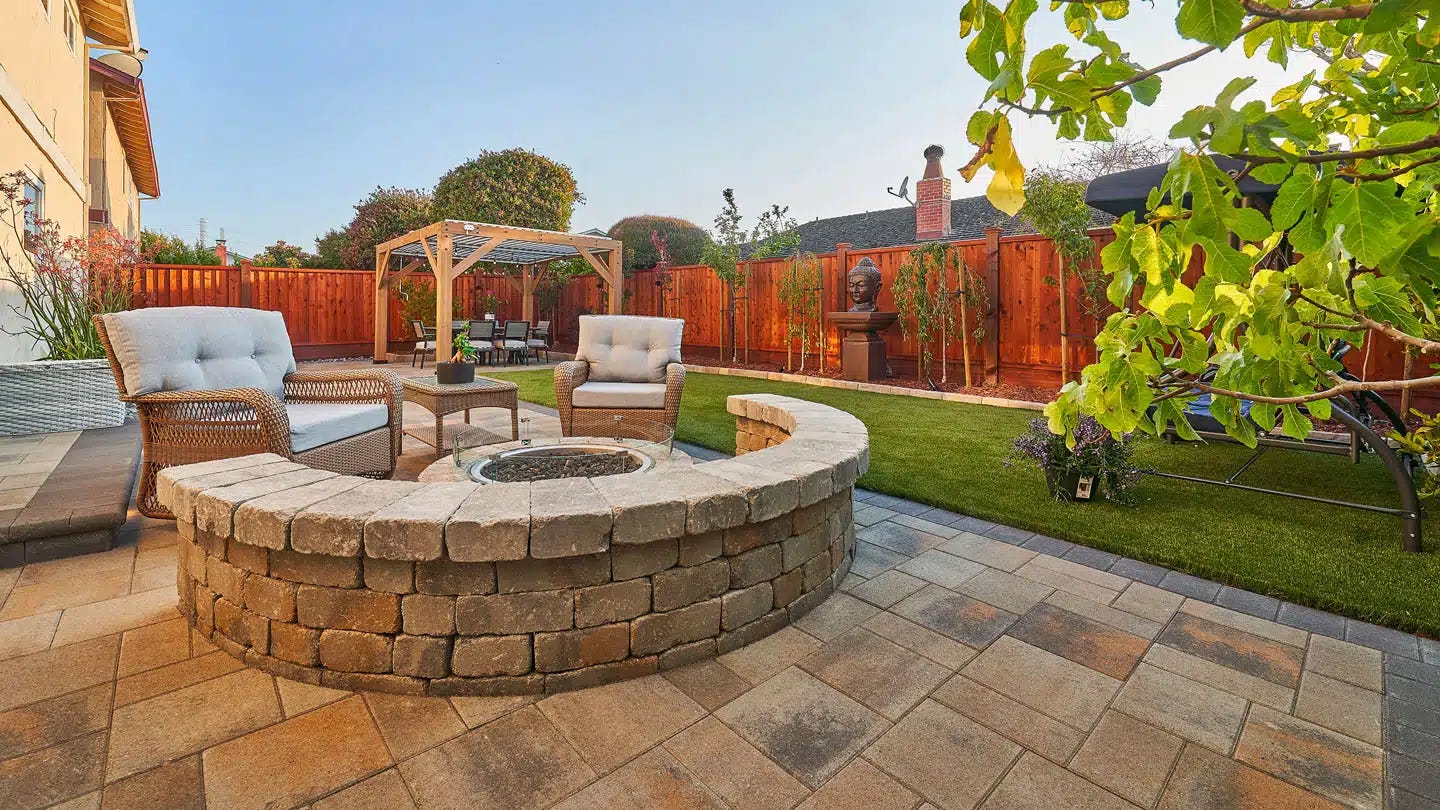
Finally, it’s worth remembering that Zone 0 is just part of a broader effort to manage vegetation on properties. Mature trees can continue to add shade and Zone 1 and 2 both permit various forms of vegetation with thoughtful curation and spacing.
How Rhino helps homeowners navigate Zone 0
At Rhino, we know that creating and maintaining a compliant Zone 0 can feel overwhelming. That’s why we’ve built an AI-powered Zone 0 visualizer, designed to create a starting point for homeowners to envision what a wildfire-resilience landscape could look like on their specific property.
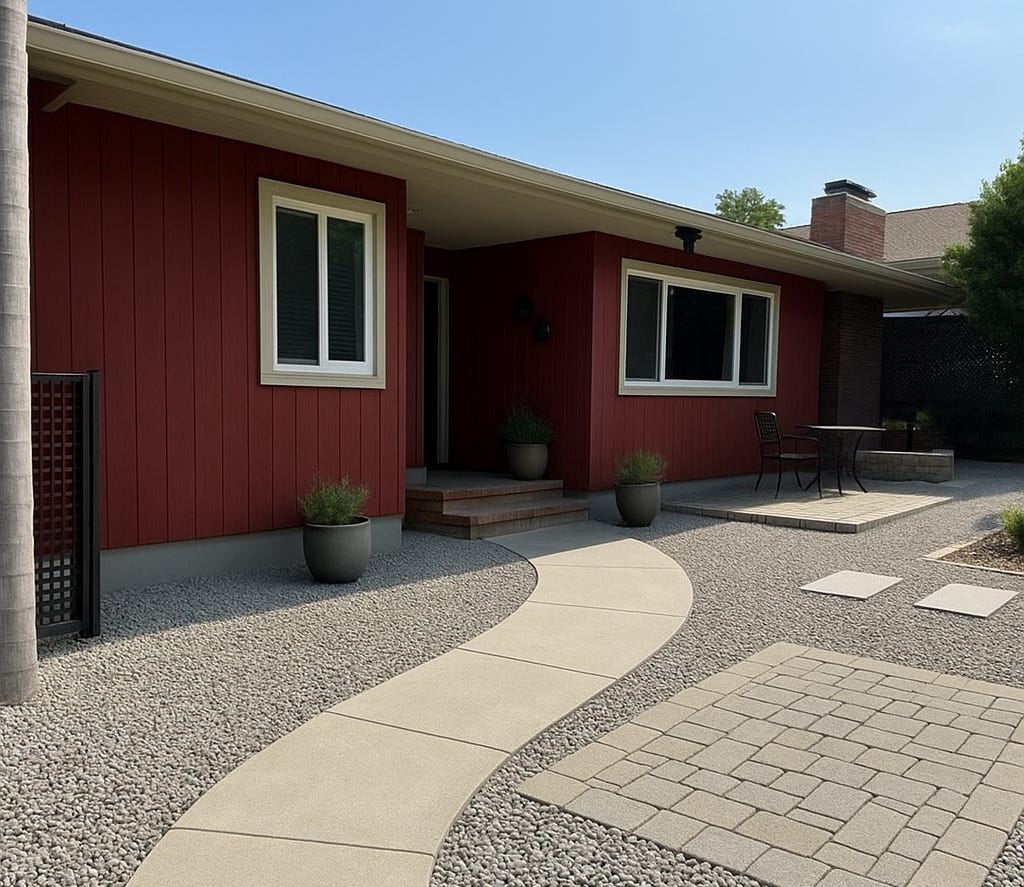
When it’s time to take action, Rhino manages projects end-to-end, partnering with vetted contractors who understand the unique requirements of wildfire-resilient landscaping and home hardening. We also help homeowners navigate the maze of incentives and insurance discounts available for Zone 0 and other defensible space improvements.
Perhaps most importantly, we stay with you over time. Wildfire risk is not static, and neither is Zone 0. Rhino’s homeowner portal and regular reviews help ensure that your property is wildfire-prepared even as conditions change and new best practices emerge.
Final thoughts
Despite the controversy, California’s Zone 0 regulations offer a promising example of how strong policy and individual actions can contribute to community safety and preparedness. By combining science and thoughtful design, commitment, homeowners can create Zone 0 landscapes that are both beautiful and resilient. If you’re ready to get started on your Zone 0 journey or have more questions, visit withrhino.com or reach out to info@withrhino.com.
Learn more
Board of Forestry’s working group site, which includes upcoming meetings, rule drafts, and opportunities to submit public comment
CSAA / UC Berkeley’s landscape design contest, for examples of Zone 0 designs




